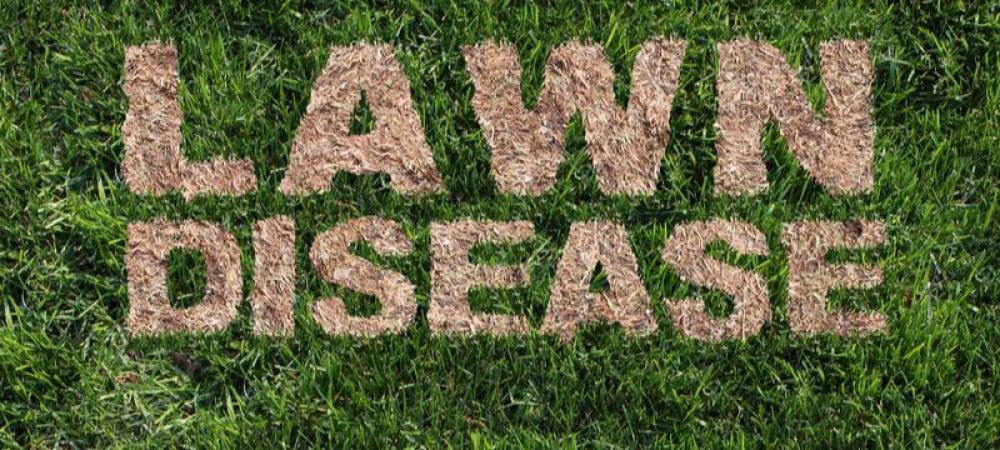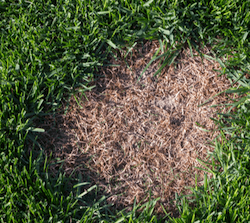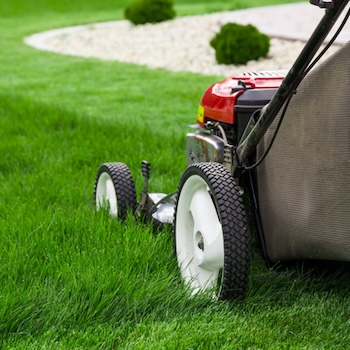Common Lawn Diseases Affecting Missouri Turfgrass

As summer gets closer, so do the problems and lawn diseases that affect Missouri lawns. Lawn diseases are the distress of every homeowner. They can start small and seem insignificant, but some diseases can wreak havoc on your lawn. Lawn diseases can affect many grass types and can affect your yard at different times of the year. Knowing the signs early can help you win the war on lawn diseases and keep your lawn looking green and healthy.
Lawn Disease To Watch Out For This Summer
Brown Patch

Brown patch is a common lawn disease in Missouri that appears in brown or tan circular patterns ranging from a few inches to several feet in diameter. Brown patch thrives in hot, humid conditions, especially at night. Compacted soil,
poor drainage, over-watering, and watering late in the afternoon can lead to the formation of brown patch. Left untreated, brown patch can thin out your grass and leave your lawn vulnerable to other diseases, pests, and invasive weeds. You can prevent brown patch by overseeding with different tall fescue varieties and ensuring your grass can dry out.
Dollar Spot
The dollar spot fungus gets its name from the way it appears as rounded bleached patches of grass. The fungus begins to grow and infect vulnerable grasses in the spring when night temperatures rise above 50°F. Symptoms of dollar spot may not become noticeable until later in the spring or early summer. Rain, overcast weather, and watering too late in the day can also lead to severe dollar spot epidemics on susceptible grasses. To prevent dollar spot, water deeply but infrequently and avoid late watering. Collect and dispose of grass clippings when symptoms are present.
Red Thread
Red thread develops in circular or irregular patches from 4 inches to 2 feet in diameter. The patches have a reddish hue from a distance because of the thick red strands of fungus growing from the leaves. The fungus attacks ryegrass, bentgrass, bluegrass, and fine fescue in the spring and fall, when conditions favor its growth.
Necrotic Ring Spot
Necrotic ring spot attacks the roots and crowns of cool-season grasses such as Kentucky bluegrass, ryegrass, and fescues. The damaged grass can become weak and susceptible to other lawn diseases. Necrotic ring spots can appear as light green to straw-colored spots on the grass that can range from several inches to several feet in diameter. As the fungus spreads, grass on the ring’s outer edge begins to die while the grass in the center remains green. To prevent necrotic ring spot, do not water later in the day and overseed with stronger grass strains.
Pythium Blight
Pythium blight appears as small indented circular patches that can impact both cool-season and warm-season grass. The cool-season variety grows in hot, humid weather and appears as small, sunken, circular patches up to 1 foot in diameter. In warm-season grass, Pythium blight looks like small purple or black spots that can grow into larger areas.
How To Treat Lawn Diseases
Treating and preventing lawn disease is a two-fold strategy. First, keep up with lawn maintenance.

Watering – Don’t drown your lawn! Fungi love moisture. Lawns only need about 1.5 inches of water a week. If it rains, you may not need to turn the sprinkler on at all.
Mowing – Don’t trim your grass too short, and don’t neglect your mowing schedule. Short grass can sprout weeds; long grass can harbor fungi and other disease-causing microbes.
The second strategy to maintaining a disease-free lawn is to employ the help of lawn care services. At Quality All-Care, our technicians are experts at diagnosing and treating all manner of lawn diseases. There’s no need to put up with an infected lawn. We can knock out existing problems, prevent future ones, and keep your grass looking green all season long!
Find Lawn Care Near Kansas City
At Quality All-Care Lawn Services, it is our mission to create amazing lawns for members of our community. We have over 30 years of experience fighting common lawn diseases, and it shows in the work that we do. We treat our community’s lawns like our own, so you can rest easy knowing you are getting the best possible care. Our 7-step lawn care program works to fertilize your lawn while applying lawn disease control simultaneously. Sign up for our lawn care program and be prepared to have a lot of free time on your hands. We also provide tree and shrub services and flea and tick control to take back your backyard this summer.
We also service the following cities in Missouri: Blue Springs, Independence, Raymore, and more!
